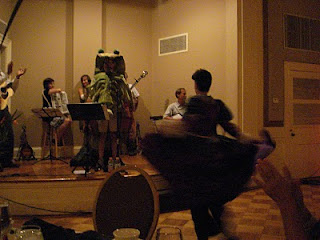In Europe, crayfish are being beaten up by exotic North American species. If competition doesn’t get them, the crayfish plague that the exotics carry will.
In North America, the home to the greatest diversity of crayfish species in the world, non-indigenous species are playing a role in some regions, but habitat degradation is the bigger concern. At the Astacology meeting, we were treated to scenes like this:
Mountains are being flattened to remove coal.
Strangely, the same factors that lead to the wonderful high diversity of North American crayfish are the same factors that make them vulnerable, mainly geographic isolation. Because crayfish need to stay wet, and are not terribly mobile, they often don’t disperse very well on their own. Consequently, many species have a limited range, often falling within a few locations in a single American state.
Taylor and colleagues provide a summary of just how bad things are in North America. The take home message that every crayfish biologist and every crayfish pet owner should have burned into their brain is this:
Almost half of North American crayfish species are under threat.
I don’t use the phrase “under threat” in any sort of technical way, but just indicating some sort of conservation concern.
On a per species basis, crayfish are the
Taylor and colleagues provide other useful information, including a list of all known species and a standard common name. The article is rather nicely illustrated with a few crayfish pictures, too (not for every species, however).
All of this makes the prospect of Marmorkrebs being introduced into North American waters a veritable nightmare scenario. Competition between Marmorkrebs and a local species could be enough to push a species into extinction.
Reference
Taylor, C., Schuster, G., Cooper, J., DiStefano, R., Eversole, A., Hamr, P., Hobbs, III, H., Robison, H., Skelton, C., & Thoma, R. (2007). A Reassessment of the Conservation Status of Crayfishes of the United States and Canada after 10+ Years of Increased Awareness Fisheries 32(8): 372-389. DOI: 10.1577/1548-8446(2007)32[372:AROTCS]2.0.CO;2
Photo by ddimick on Flickr. Used under a Creative Commons license.





















